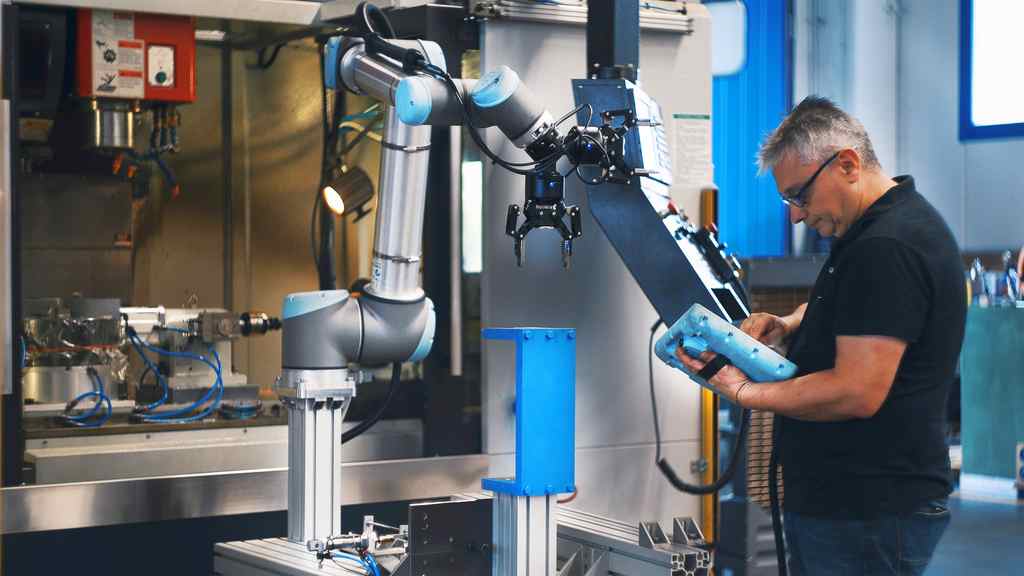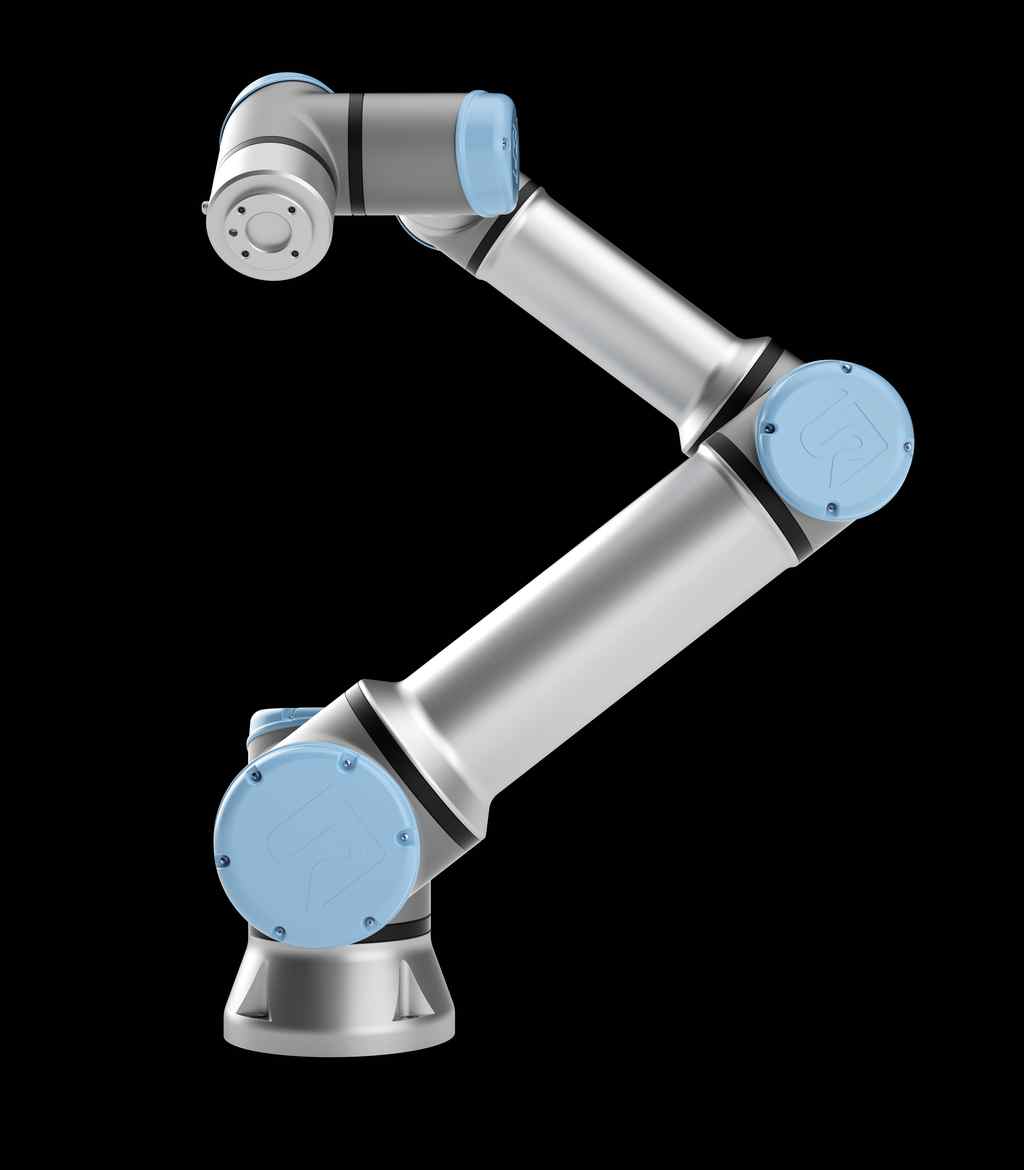Changing the way you manufacture

Mark Gray, UK & Ireland manager of leading automation company, Universal Robots offers his perspective on how Industry 4.0 can help revolutionise and transform the aerospace manufacturing sector.
Given the high value, low volume nature of much aerospace manufacturing production, a future with a network of mobile robots capable of carrying out multiple different tasks is going to be a lot easier than having specific machines designed for individual stations. Having cobots on the production line instantly gives the flexibility to meet market demands.
Our robots have been designed with Industry 4.0 in mind. We’re able to take information from the robot, as well as send information so that it can be redeployed to new jobs very quickly.

To the doubters that think there’s a lot of hype around Industry 4.0 and cannot really see how digitalisation will drive ROI, I would say that ‘connected manufacturing’ between different devices can only lead to better production in the future. We are gathering data all of the time, meaning that we can map out our own processes to accurately measure costs, productivity and scrap.
In terms of ROI, we often talk about incremental automation. You don’t have to start with a completely networked system - you can start small with a single application and fund your next investment with the savings. There’s very little risk because the cost is low and cobots provide that flexible scalability at your own pace. Robots can add a lot of value within aerospace manufacturing without doing anything particularly ‘smart’. For example, just having them load and unload parts from a CNC machine can drive a rapid return on investment if it frees up employees to focus on other activities.
A new mindset
Is the aerospace sector embracing the change and adopting a digital mindset or is it getting left behind? Well, compared to automotive and electronics, aerospace has been a little bit slower to embrace automation. That’s mainly because it was easier to deploy earlier generations of robots in high volume settings than it was in the more specialised arena of aerospace.

However, we’ve seen more and more enquiries from the aerospace sector in the last 12 months, and that’s all about changing company culture and being open to new techniques. Global players are in contact now about getting a cobot strategy across all of their sites to increase productivity where there is a lack of labour and social distancing on the shopfloor. With a backlog of orders to fulfil, it’s important to put steps in place now to increase output and make costs of manufacture more predictable.
Automation could be viewed as a way of de-skilling the industry, but you’re never going to get rid of people. There are hundreds of skills that a robot doesn’t have. It doesn’t have intuition, it can’t make decisions; those are human values.
Human skill is the most valuable resource for any manufacturing business and that must be used sparingly and to your advantage. Using a robot as a tool to take over dull, dirty and dangerous jobs doesn’t put people out of work - it puts people in jobs where they are giving the most value. I’d argue it’s actually a lack of robotics and automation that harms job prospects as those that don’t move with the times are quickly out-competed on the global stage.
We also talk a lot about ‘Task Balancing’. By using the robot as a tool to take over some of the tasks in one cell, you’re letting a person do more. If you can put a tray of parts down for a robot to load into the machine, then one person can look after three machines and take finished parts away, so you’ve increased throughput threefold, made that employee’s job a little more interesting and haven’t introduced anything that should be considered beyond their capabilities.
Human interaction
With a small amount of retraining it’s also possible that individual can now begin to take measurements and complete quality inspections, which is particularly important in aerospace when working with high value metals and high value components. You are able to reduce scrap, making your process more sustainable, all while redeploying people into the gaps in the labour market. I don’t think we will ever have factories where it’s all robots and no people because there is still so much human skill involved in assembly, inspection and making decisions.

For example, if you take something like scanning components, it’s really laborious for someone to stand with a scanner for eight hours a day. Using a robot means that the scanning can be done 24 hours a day, more consistently and with no danger of an employee developing a workplace injury from repetitive strain.
With other laborious jobs like polishing turbine blades, a human can map out the pathway for the perfect finish for a robot to copy, then every polish would be as good as the human skill with greater consistency. This kind of automation would free up more throughput and the person working on that cell could then inspect more of the output, adding more value to the products coming through. The robot is all the while recording feedback on hundreds of thousands of parts to ensure that everything between the first and last part is identical. Automation can give you that certainty.
What truly differentiates Universal Robots from the competition is our product range’s flexibility and ease of use. Our robots are designed with non-robot users in mind. It can be taken out of the box and set up within an hour. Anyone can programme it and with the UR Plus scheme, it can be moved to multiple different tasks throughout your factory. Customers should use us because our robots are futureproof.
The new normal
Post-pandemic, the aerospace industry will have to contend with fulfilling existing orders in an environment where labour availability is scarce and raw material costs high. Manufacturers will also need to ensure they have the forward-looking capacity to bid for and win new work on competitive yet profitable terms.
Many aerospace companies also have an aging workforce. We spoke to a company who had an average age of 56, so in 10 years they’re going to have a real problem if they can’t find new engineers - or they haven’t found ways to automate. Regardless of the rest of the world, manufacturing is not going back to the reality we knew before.
The landscape we’re going into is very different, and even if many things go back to normal, automation has been adopted to a very high scale to fix historical problems. It’s essential that companies change the way they manufacture in the next 12-18 months, or they risk being left behind - especially if they want to be competitive in the global marketplace.













